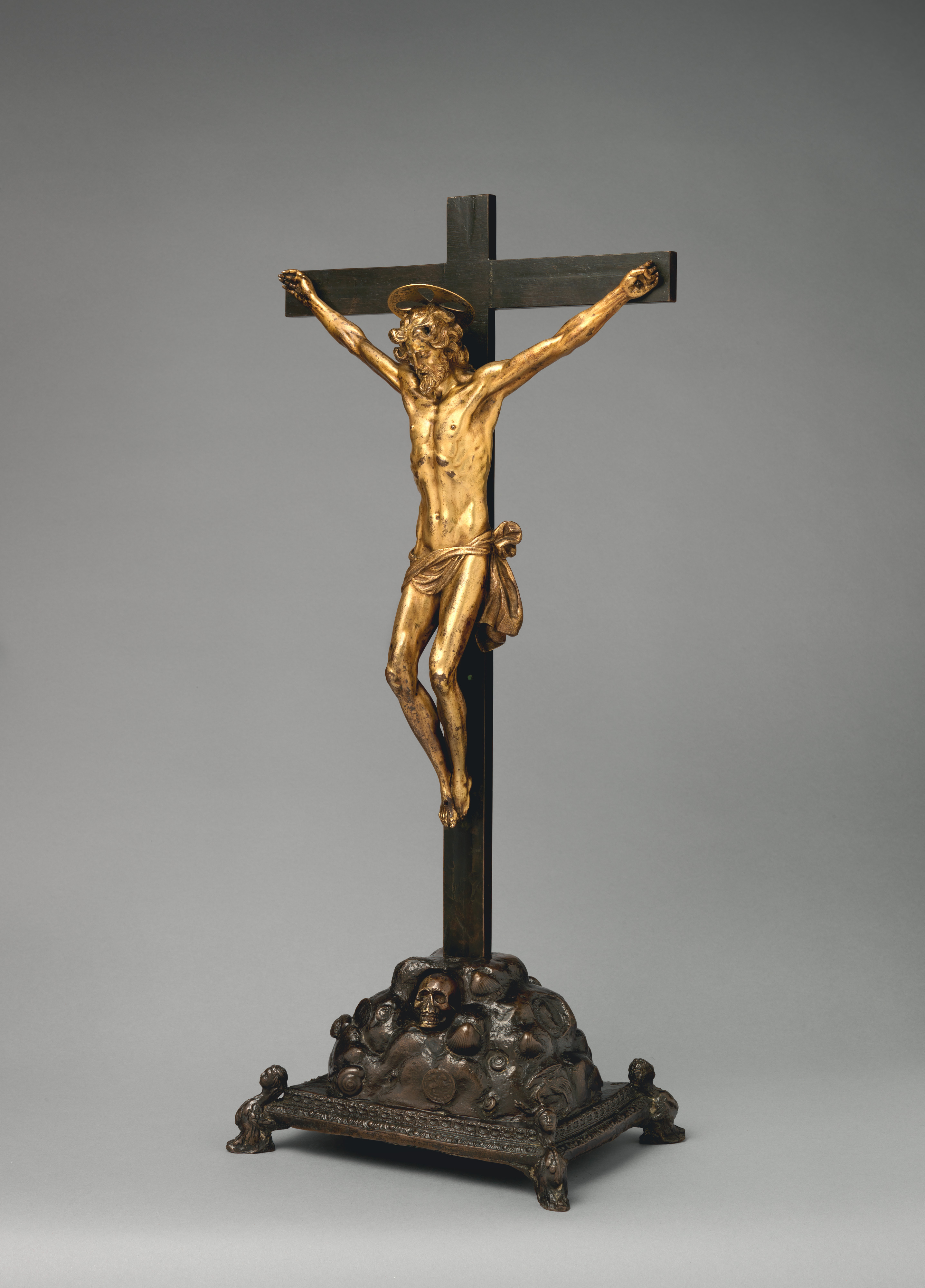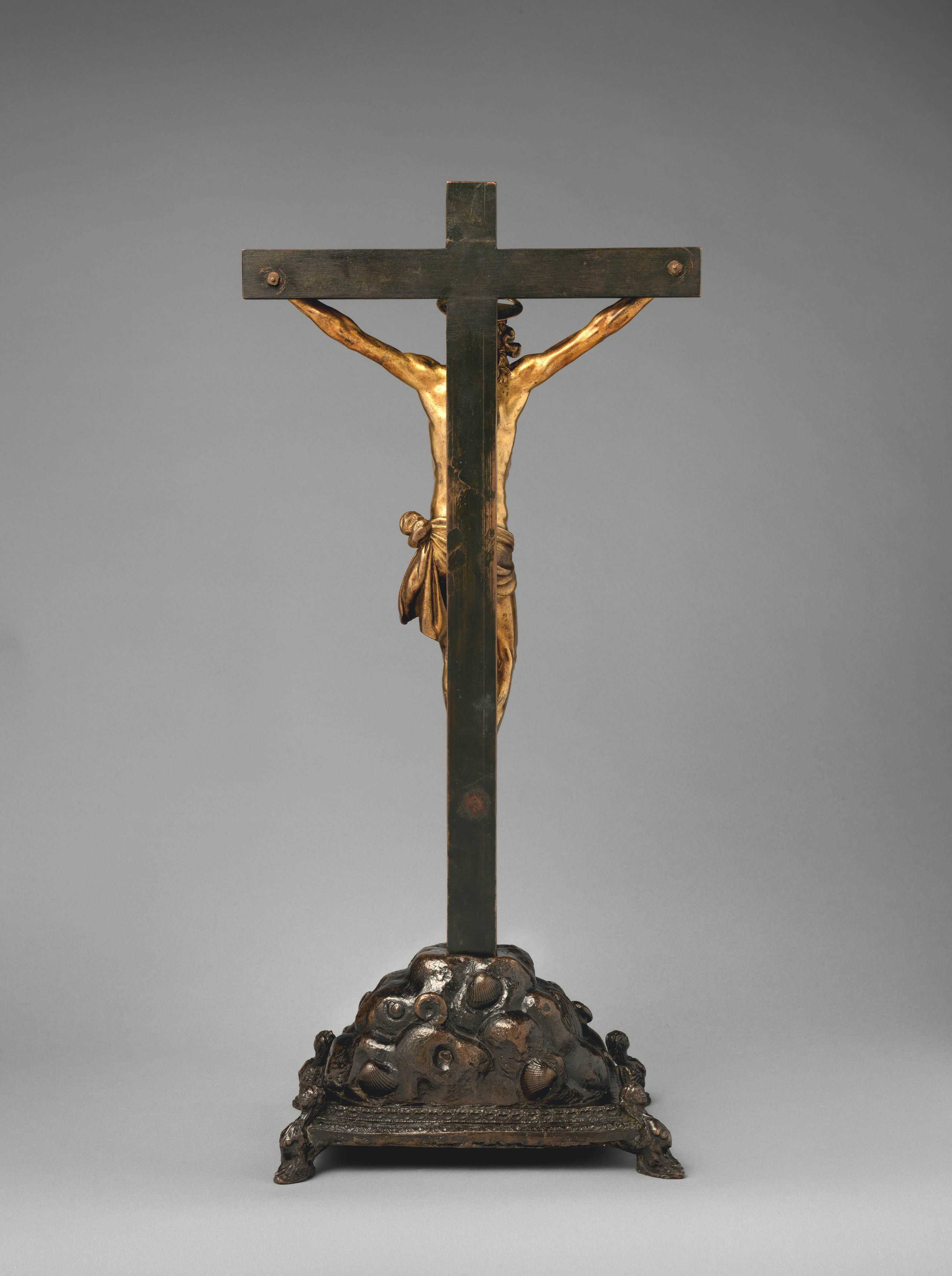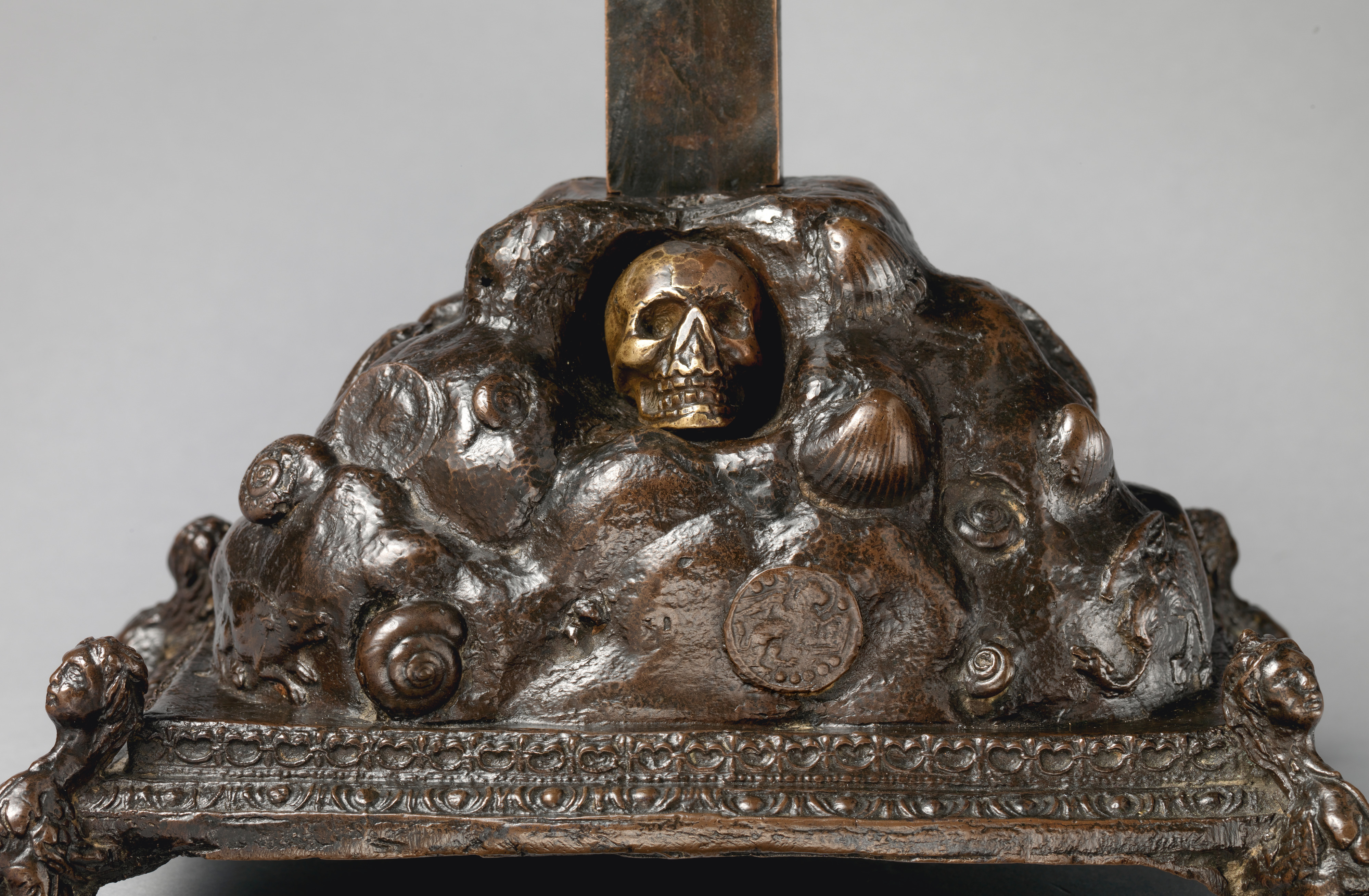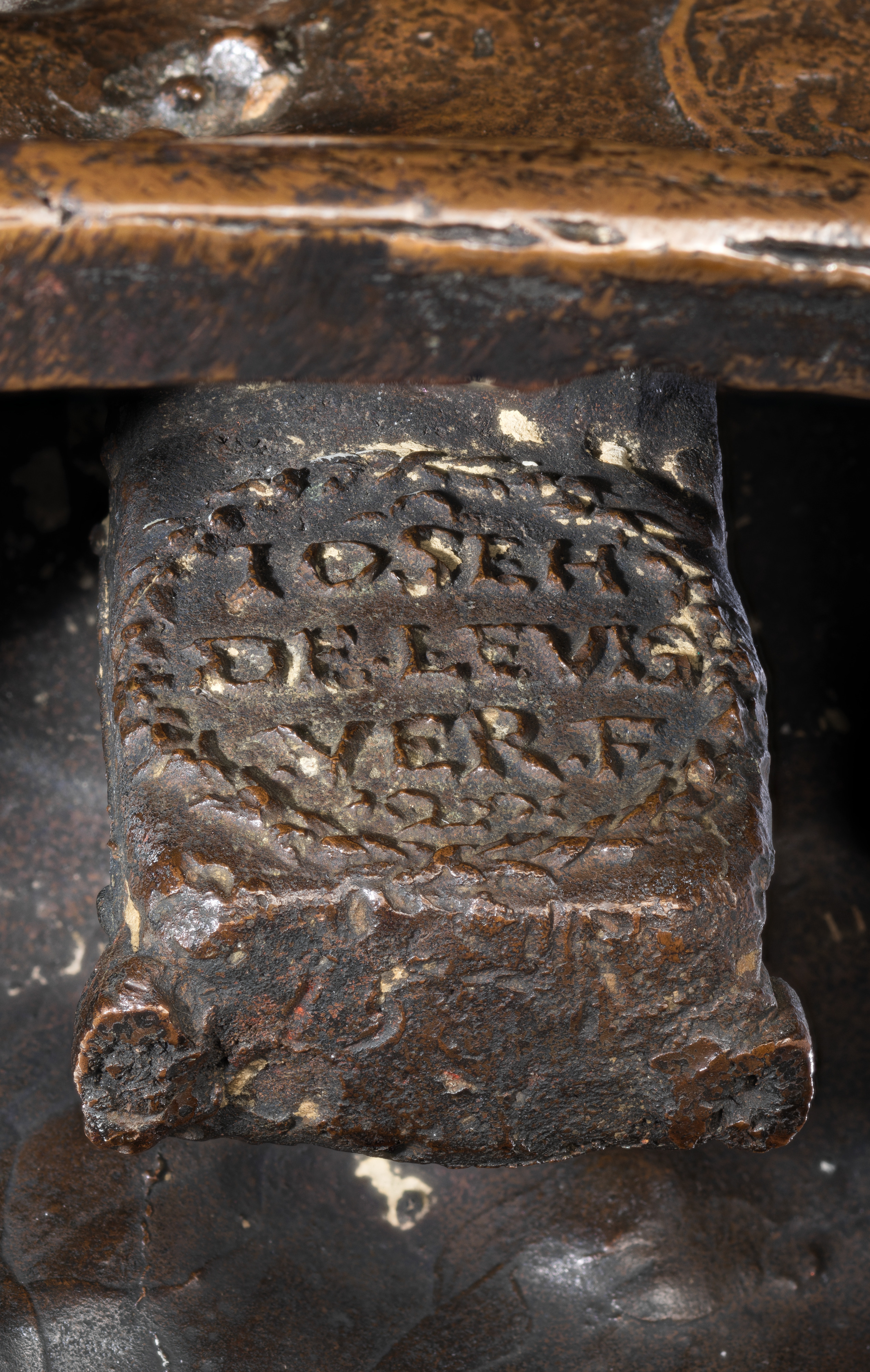Crucifix on a Golgotha base
Base by Giuseppe de' Levi Italian
Corpus probably by Unidentified
Not on view
The cross with a gilt corpus stands on a base representing Mount Golgotha. The base is decorated with cast-in Roman coins and images of fossils, shells, snails, and a hedgehog; its feet are modeled in the shape of a sphinx. The base is signed IOSEH DE·LEVIS VER·F. (fig. 83a), according to which it was cast by Joseph de Levis, a bronze founder and sculptor active in Verona in the late sixteenth century and most probably of Jewish origins. De Levis frequently signed his bronzes, and the signatures have been analyzed in depth by Charles Avery, who concluded that here it should be read as “Joseph de Levis made me in Verona.”[1] The mention of the city is thus a locative, not a reference to the sculptor’s hometown (that is, Joseph de Levis of Verona, Latin: Veronensis). Written in full, the signature in Latin could be “Joseph[us] de Levis Ver[onae] F[ecit].” This reading is in line with a family tradition: Joseph’s elder brother signed church bells in Italian, “Santo de Levis in Verona me fece.” The signature thus gives visibility to the place in which the bronze was physically cast and stresses the Jewish heritage of the family, as the italianized “Giuseppe” never appears in contemporaneous documents.[2]
The base is cast from a slush-molded wax model.[3] The inserted skull, which Avery considers to be a later addition, refers to the tomb of Adam. The coin on the lower front with the winged lion of Saint Mark in relief signifies the Republic of Venice. One of the Roman coins bears the profile portrait of Nero and the asymmetrical inscription IMP·NERO·CAESAR. The Roman coins denote the time of Christ, evoking the Passion and the betrayal of Judas. Avery has compared the sphinxlike feet to those of de Levis’s inkstand with Christ and the Samaritan Woman at the Well.[4] Golgotha is characterized by a style typical of the Paduan bronze tradition, for instance in the detail work of the shells and fossils, probably taken directly from nature. Avery, in fact, recalls an old attribution of our Golgotha to the Paduan Bartolomeo Bellano in light of its stylistic similarity to the so-called Mountains of Hell, which were ascribed to Bellano by Wilhelm von Bode and then firmly documented to Agostino Zoppo by Manfred Leithe-Jasper and dated around 1540–50.[5]
The corpus and the Golgotha base are neither technically nor stylistically related. The Christ figure seen here is evidently not the original one and seems to be a much later product, possibly made by a Veneto artist.[6] The work in its current state was sold from the collection of the Florentine art dealer Stefano Bardini in 1899, at which time the corpus was optimistically attributed to Brunelleschi. When it entered The Met in 1981, James David Draper designated the corpus a Milanese product roughly contemporaneous with the base. The elongated figure of Christ and his leonine hair, however, argue against such a dating. Moreover, the corpus is the result of a perfect cast, unlike the base. X-radiographs have revealed the exquisitely thin, even walls, suggesting to Richard Stone the hand of a silversmith accustomed to casting in precious metal. Another example of the corpus, though much less refined than ours, was recently offered on the art market as “ca. 1600, Italian (probably Roman).”[7]
-FL
Footnotes
(For key to shortened references see bibliography in Allen, Italian Renaissance and Baroque Bronzes in The Metropolitan Museum of Art. NY: The Metropolitan Museum of Art, 2022.)
1. C. Avery 2016, pp. 12–16.
2. For an alternate reading of the signature, see cat. 84.
3. For slush molding, see the essay by Richard Stone in this volume, p. 00.
4. C. Avery 2016, p. 129, no. 34.
5. Ibid., p. 133. On the Mountains of Hell, now in the Pushkin Museum, Moscow (7268, 7269), see Bode 1907–12, vol. 1, p. 22, pls. XXV, XXVI; Leithe-Jasper 1975, pp. 124–33; Siracusano 2017a, pp. 170–73, no. 5.
6. Radiographs highlight a curious technical combination in the corpus: a plaster core, more typical in Northern examples, with drilled-out core pins and carefully fitted screw plugs in the Florentine Giambologna/Susini tradition. Richard Stone has proposed that the corpus was cast in Rome in the later seventeenth century. He identified the skull as a high zinc brass, which supports Avery’s theory that it was inserted later. R. Stone/TR, October 29, 2010.
7. Michael Riddick, Old World Wonders, Leesburg, https://www.oldworldwonders.com/product/an-important-gilt-bronze-corpus-ca-1600-italian.
Due to rights restrictions, this image cannot be enlarged, viewed at full screen, or downloaded.
This artwork is meant to be viewed from right to left. Scroll left to view more.






